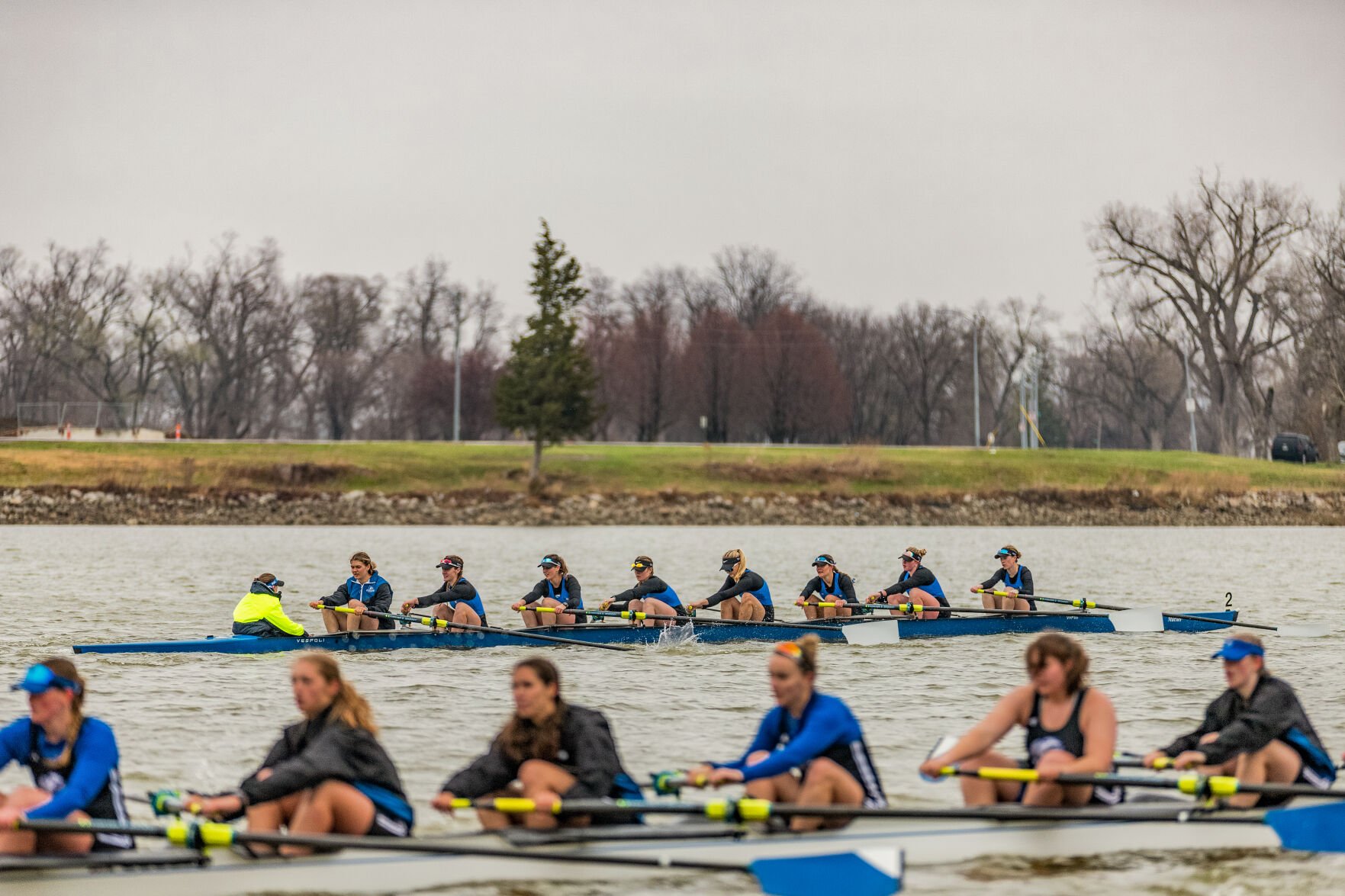When the Creighton rowing team took to the water against Drake on March 29, a two-hour delay due to storms left the team feeling cold and restless. As soon as the race began, though, the athletes’ preparation and resilience took over. Fighting through choppy conditions, Creighton swept all three races, with the varsity eight finishing more than four seconds ahead at 7:29.1, the second varsity eight securing a sevensecond win at 7:54.2 and both varsity four boats comfortably beating Drake by over a minute.
“It was definitely not ideal conditions,” junior Paige Harty, stroke seat for the varsity eight, said. “But I think we did a good job of holding it together and staying together.”
The grueling conditions in Omaha stood in sharp contrast to the warm, sunlit waters of Waco, Texas, where the team had trained just a few weeks earlier over spring break. The Bluejays spent five days on the water in an intensive training regimen that included two practices per day and in which the team rowed over 100,000 meters. This week of training was important preparation for the team’s transition into the spring season, especially because they had not been on the water since November.
“A usual good week for us is about 80,000 [meters], so we really did get those meters in for our preparation,” sophomore Laurel Kieffer said.
That preparation paid off when the team closed out its spring break trip with a dominant performance in Oklahoma City, securing wins against Central Oklahoma and Milwaukee School of Engineering. The varsity eight crossed the line in 7:13.06, nearly 10 seconds ahead of their closest competitor, while the varsity four edged out Central Oklahoma with a time of 7:58.00.
Returning to Omaha, the team’s momentum carried into its matchup against Drake. While the extended weather delay cut into Creighton’s usual warm-up routine, the team adapted quickly.
“Not doing the full warmup was tough, because we were so cold when we started. However, we haven’t been having full warmups the whole week, so I think that helped us get used to it,” freshman Ellie Kearin said.
Beyond their physical preparedness, the Bluejays have built a strong team culture that keeps them focused and motivated. Kearin credited her teammates for staying positive and making the most of Saturday’s weather.
“I think we’re also super close as a team,” she said. “This delay wasn’t the most fun, but there was no one else I’d rather spend it with.”
To make up for lost time and avoid the possibility of storms arriving later, the time in between each race was consolidated. The boats for the next race were able to start before the previousracewas complete, meaning what would normally be an hour-long process only took about 30 minutes.
“We hit a buoy here and there and had a couple girls catch crabs, but we were still able to get across the line and win all three races,” Head Coach Dan Chipps said. “And we put both of our fours ahead of Drake’s four, which is always a good sign.”
With a deep roster and an early string of victories, the Bluejays are optimistic about what lies ahead. Spring racing consists of 2-kilometer sprints, while the fall rowing season involves longer races about three miles in length, called head races. Chipps compares this to the distinction between track and cross country, with the former offering a test of raw power and high-intensity racing, similar to the team’s spring season.
“Spring is so much more fun, because you know where you are [in the race]. You’re lining up boats across and jockeying to see who gets to the finish line first, and that adrenaline gets going,” he said. “That’s why we sat around today to get this race in, because the more I can get them racing early in the season, the better off we’re going to be at conference.”
From Waco’s sun to Omaha’s storms, the Creighton rowing team has proven its ability to perform under any conditions. As the season progresses, the team will look to continue building on their early success, with eyes set firmly on the conference championships in May.
